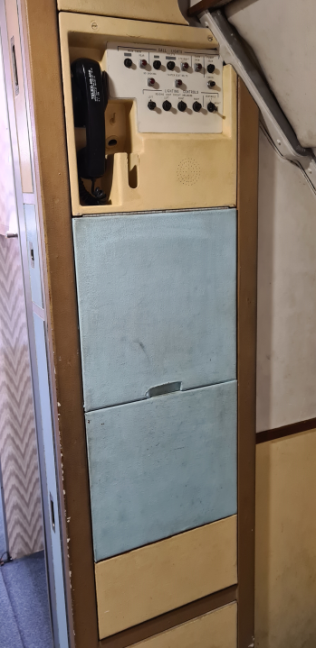Communication systems in SA - ATA 23
- museedelta
- 2 févr. 2024
- 3 min de lecture
To communicate with each other, with the ground or with passengers, crew members have the following facilities:
- A communication system which includes the sets: VHF and HF transceivers,
- a SELCAL system used to select calls to the aircraft from the ground,
- a cabin sound system also called Public Address and
- an intercom system with the passenger cabin and with the ground.
In this magnificent photo of the SA cockpit taken by our friend Clément W. we can see the different means of communication which we will detail below:

Radio communications:
All the radiocommunication equipment is located on the central console between the two pilots.
The VHF (very high frequency) installation consists of two transceivers, which allow voice communication in the range 116 to 151.95 MHz with a spacing of 50 kHz, providing 720 channels, for communications with control towers and control centers en route.

In the photo above in our plane only the VHF on the right corresponds to the model which was used at the time, not having a second identical one, we had to install another set which resembles a bit.

The particularity of the SA, the high frequency HF (High frequency) installation consists of four transceivers, which allow voice communication in the range of 2 to 29.999 MHz with a spacing of 1 kHz, offering a maximum of 28,000 canals.

Two HF sets are installed next to the VHF transmitters at the front of the center console and directly accessible to both pilots for long distance communication.

Two other HF sets are installed on the rear part of the central console and which are accessible to the third member of the crew and which were certainly used for service communications during flight tests

The SELCAL installation :
This device allows the crew to make selective calls, on VHF or HF, and to receive calls from a ground operator to a designated aircraft in a group of aircraft

Sound system and communication in the cabin:
A quick reminder, the cabin of the SA when it arrived at Orly on May 20, 1976, was completely empty, because all of the rear cabin and the test installations had been dismantled. The rear cabin which was used for VIP flights was reused on the aircraft following the F-WTSB, the first production aircraft which was used for certification, at the beginning of 1976 (note that this aircraft made its first flight in December 1973, less than a year after F-WTSA), the test facilities were certainly used as a source of parts for the remaining test aircraft. Air France has created a layout very similar to the original equipment of a commercial cabin for the ADP guided tours which are still on the plane.
The cabin sound system has two functions:
It ensures telephone communication between cabin crew and crew members and announcements to passengers.
In the forward cabin at the main entrance.
This frame protects the intrcom telephone receiver, the public address microphone, the indicator lights linked to calls and the various cabin lighting switches.
In the central galley at the level of the second door and the emergency exit.
It allows crew announcements to passengers in the cockpit.
Intercom system and ground call:
Very little visible so we present it to you here in a few photos.
During boarding you can often see a mechanic or ramp attendant connecting to the plane with a headset fitted with
a long spiral cord. This intercom system provides a means of communication between crew members and ground personnel.
A ground call push button is located on the rear part of the upper central panel, it is easily accessible to the three members of the crew and is used to establish contact with the runway mechanic, who becomes the essential contact during starting the engines and pushing back the plane.


The ground call push button in the SA cockpit

The same push button in the G-AXDN. Concorde 01 or 101 (Photo Heritage Concorde).
It's curious to see this kind of horn in an airplane...
It is placed in the nose gear housing and is not visible from the outside, and it warns the mechanic on the ground.


The large white cables that pass behind the horn are the electrical power cables that connect the aircraft to the GPU (outer park unit) which provides a three-phase current of 115 V.AC. (alternating current) at 400 Hz, which will be converted on board by four TRU (rectifier transformers) to 28 V DC. (direct current).
Below the general loudspeaker on the left part of the cockpit, broadcasting the audio warning when called by the ground team but also used for aircraft alarms.
.






























Commentaires